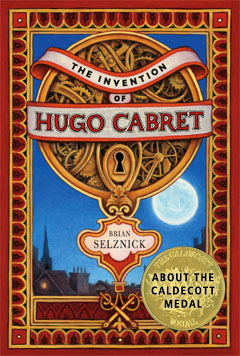
Cover image of The Invention of Hugo Cabret
Children’s literature is, practically by definition, a multimedia endeavor. The beloved works of Dr. Seuss, Elsa Holmelund Minarik, Roald Dahl, Frank Baum, and countless others have a drawing at least every few pages, if not on every page. But as the audience grows older and gains reading proficiency, the pictures slowly disappear, an indication that all but the simplest of stories can be told in words alone. The multimodal aspects of children’s literature are, then, little more than a helpful scaffold to engage children while building the skills necessary for reading.
Recent comments
2 years 29 weeks ago
2 years 44 weeks ago
2 years 44 weeks ago
2 years 50 weeks ago
3 years 4 weeks ago
3 years 4 weeks ago
3 years 4 weeks ago
3 years 6 weeks ago
3 years 6 weeks ago
3 years 6 weeks ago